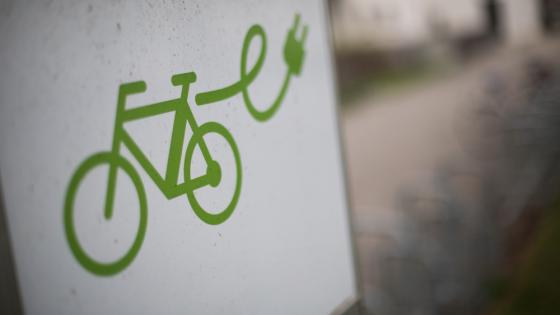Emissions from transportation account for about 29% of total US greenhouse gas (GHG) emissions, making it the largest contributor by sector to global warming.
Within the transportation sector, cars alone are responsible for 58% of all transportation emissions, according to the US Environmental Protection Agency. Along with electric cars, electric bikes or pedelecs (e-bikes) are a potentially important tool to address global warming (Holland et al. 2015). With rechargeable batteries that make them capable of long distances, they can replace car trips for work in dense and growing urban areas around the world.
Since e-bikes are relatively expensive, policymakers have introduced subsidies to stimulate and speed up adoption. However, welfare analysis of these e-bike subsidy programmes is challenging for several reasons:
- Incidence: A welfare analysis requires measures of how the subsidy is allocated between consumers and producers. If supply is relatively inelastic, producers compensate themselves for higher demanded quantities.
- Additionality: Beyond sharing the surplus, policymakers are concerned that programmes attract additional users and not benefit only those who would have converted even absent any subsidy (Joskow and Marron 1992, Boomhower and Davis 2014).
- Substitution from driving: The second point also raises the issue of whether a family that buys an e-bike will necessarily cut down their driving or if the bike will substitute for other means of transportation instead.
Sweden’s e-bike subsidy
To address these issues, in Anderson and Hong (2022) we combine administrative, insurance, and survey data from a large-scale Swedish e-bike subsidy programme from 2018. The programme, which gave a 25% discount on purchase price, is similar in structure to programmes run and proposed in other countries. It was very popular. The one billion krona ($115 million) programme was intended to last for three years, but exceeded its per-year spending limit during its first year, with almost 100,000 e-bikes sold. The subsidy was for 25% of the retail price, with a limit of 10,000 kronas (or around $1,100).
Incidence
In order to assess the effect of the subsidy on prices, we merge the subsidy data with sales data from a leading insurance provider for bicycles in Sweden, obtaining sales data both within and outside of the subsidy period.
Figure 1 plots prices and volumes of the 38 top selling e-bike models sold throughout the period across the country’s 49 largest retailers, obtained by matching the two data sets. The bold line shows the average price, which scarcely changed before and after the introduction of the subsidy. The average price is driven by a depreciation of the currency (and a host of other fixed effects that we consider). We find that the entire discount given consumers through the subsidy landed in the hands of the consumers.
Figure 1 Average price and quantities for top selling e-bike models around the 2018 subsidy
Additionality
The grey bars of Figure 1 show the effect on quantities, where the darker shades indicate the subsidy period. Consistent with the overall reported volume increase, we find that around 70% more e-bikes were sold during the subsidy. We also use the SEPA survey, which asked people to assess the importance of the subsidy, and find that about two-thirds of consumers would not have bought the e-bike without the subsidy.
Substitution from driving
For the final piece of analysis, we need data on driving behaviour before and after the purchase of the e-bike. Data on commuting behaviour is available on the SEPA survey. We find meaningful changes in car driving behaviour. Almost two-thirds of our sample report using a car to some extent for commuting before buying an E-bike, and more than half use it on a daily basis. After having bought the e-bike, only 4% kept using the car every day and 54% used the car less frequently (of this latter group, 23% stopped using the car for commuting altogether). The change in commuting behaviour by car is more pronounced than by other means of transportation, such as regular biking or public transport. Interestingly, we find that the subsidy pick-up was relatively larger in less populated regions and not in big cities.
Carbon reduction
For the final piece of the analysis, we put our results together. The average per unit cost for the subsidy amounts to around $500, but given that it is paid also to non-additional users, this rises to $766 per additional unit sold. The data on changed driving behaviour allows us to pull out the average reduction in car use for additional users. Multiplying through with the average life-span of an e-bike and also taking into account the carbon footprint of the E-bike itself, we find the average total net carbon reduction to be 1.3 tonnes per additional e-bike. To break-even at $766, the social cost of carbon needs to be in the range of $600 per tonne, which is far away from the $50 to $100 estimates frequently discussed among economists (Nordhaus 2017). The main conclusion is that the e-bike subsidy cannot be justified on the basis of the social cost of carbon alone.
Discussion
Our estimates do not include potential incidental effects attributed from reduced traffic congestion, driving safety, improved health effects, or peer effects and increased rates of adoption. A disproportionate pick-up of subsidies in big cities speaks against the subsidy being an effective tool for lowering congestion. Driving safety and health are not only difficult to measure, but can go both ways. Car drivers constitute 42% of our sample of additional users. For them, driving safety can be reduced, though their overall health is positive. There are signs of increasing rates of adoption. Although Figure 1 shows a slowdown of purchases directly after the subsidy, sales picked up quickly in the following period. The counterfactual is hard to estimate, but an increased conversion rate as a result of the subsidy could be an important motivation for the subsidy that did not enter our calculations.
We document a relatively large gap in cost and benefit based on carbon savings emissions and leave it to future research to incorporate these other social benefits into the analysis.
References
Anderson, A and H Hong (2022), “Welfare implications of electric bike subsidies: Evidence from Sweden”, NBER working paper w29913.
Boomhower, J and L W Davis (2014), “A credible approach for measuring inframarginal participation in energy efficiency program”, Journal of Public Economics 113: 67–79.
Holland, S, E Mansur, N Muller and A Yates (2015), “Analysing environmental benefits from driving electric vehicles”, VoxEU.org, 09 August.
Joskow, P L and D B Marron (1992), “What does a negawatt really cost? Evidence from utility conservation program”, The Energy Journal 13(4).
Nordhaus, W D (2017), “Revisiting the social cost of carbon”, Proceedings of the National Academy of Sciences 114(7): 1518–1523.



